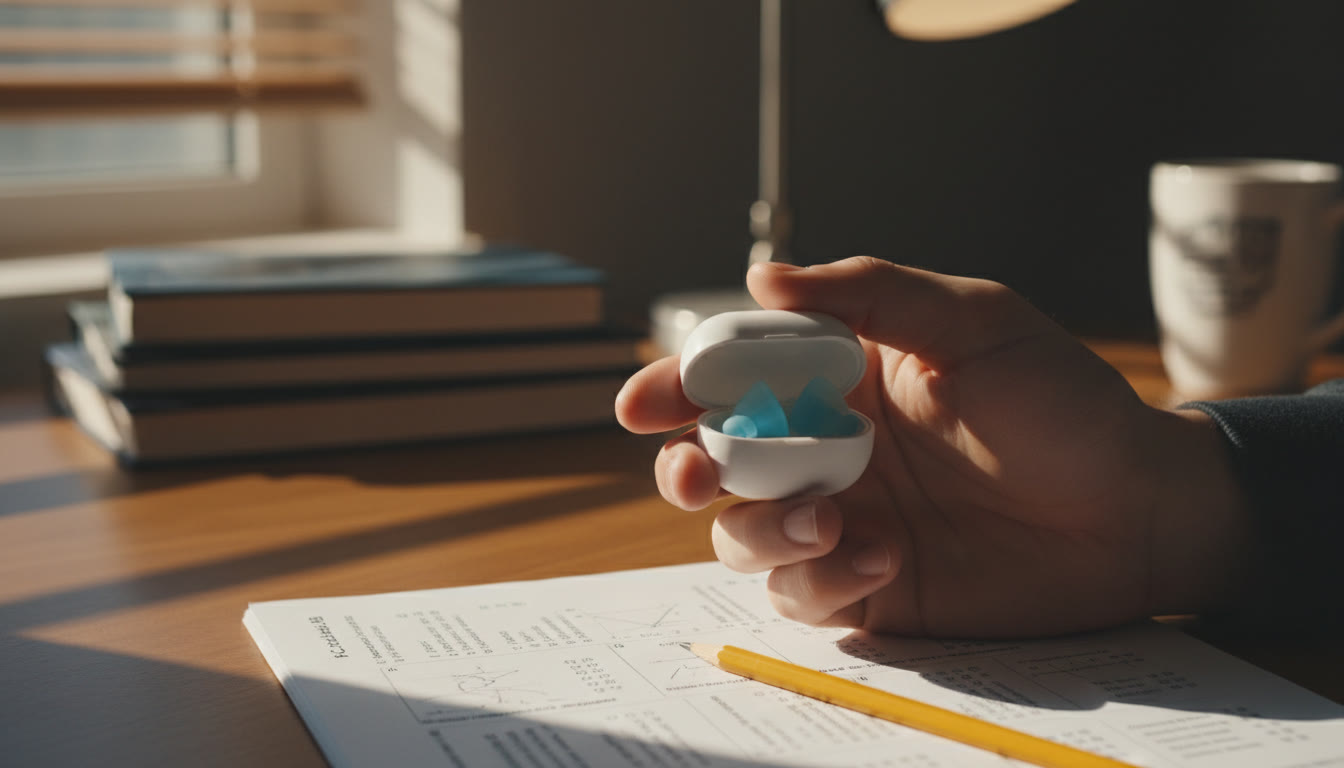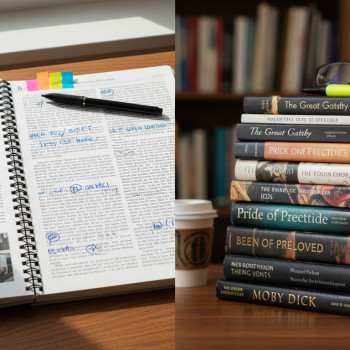Earplugs or No Earplugs? Why This Tiny Question Matters
There’s a strangely intense debate in every test prep group chat: should you wear earplugs during the AP exam? It’s a small choice with outsized effects — on comfort, concentration, and even confidence. For many students, the difference between a shaky half-hour and a productive focus session comes down to whether their ears are cushioned from the room hum, the cough in row three, or the shuffle of papers.

This post is for you if you’re prepping for College Board AP exams and want a clear, friendly, practical breakdown: the pros and cons, how to test earplugs ahead of time, what to choose, whether to use them on exam day, and how to handle accommodations conversations. Along the way we’ll sprinkle examples, short comparisons, and real-world tips that actually help (not the vague motivational fluff). And if you’re working with a tutor, Sparkl’s personalized tutoring—1-on-1 guidance and tailored study plans—can help you experiment with tools such as earplugs under coach supervision, so your strategy on exam day is calm and practiced.
First Things First: Is Wearing Earplugs Allowed?
Short answer: usually yes — but there are important rules and nuances.
Regular AP Exam Policies and Common-Sense Rules
AP testing policies generally allow personally owned items that don’t compromise exam security or provide an unfair advantage. Earplugs are typically considered personal comfort items and aren’t a problem. But there are a few exam-day realities to keep in mind:
- You should not bring devices that enable communication or playback (e.g., Bluetooth devices that could receive signals) unless explicitly permitted for an assistive purpose.
- Anything brought into the exam room may be inspected by proctors.
- If you need special testing conditions because of a sensory sensitivity, noise sensitivity, or another documented need, that belongs in an accommodations request.
Bottom line: single-use, non-electronic earplugs — the soft foam or silicone types — are normally fine. If you’re uncertain, check with your AP coordinator or exam proctor beforehand.
The Pros: Why Earplugs Can Boost Study and Exam Performance
Noise is one of the easiest but most overlooked distractions. For many students, earplugs are a simple, low-cost intervention that reduces sensory load and frees up attention.
Immediate Focus Benefits
- Reduced local distractions: muffles coughing, sneezing, whispers, and hallway clatter.
- Lower cognitive load: your brain spends fewer resources filtering irrelevant sound.
- Faster entry into a flow state: many students find they can read and process material more smoothly with less auditory interference.
Consistency and Ritual
Using earplugs in both practice and test settings builds a reliable ritual. If you always wear them while timing practice sections, your brain learns to associate the feeling of wearing earplugs with concentrated, exam-like focus. This ritual effect is underused but powerful, because test-taking is not just intellectual — it’s also procedural and psychological.
Practical Advantages for Sensitive Test Takers
For students with ADHD, anxiety, sensory processing differences, or hyperacusis (sound sensitivity), earplugs can reduce stress responses and improve sustained attention. In some cases, wearing earplugs is part of an approved accommodations plan — more on that later.
The Cons: Why Earplugs Aren’t a Perfect Fix
No tool is universally right. Earplugs have downsides and potential risks.
Comfort, Fit, and Distraction
- Poorly fitting earplugs can be uncomfortable, slip, or cause ear pressure — which itself becomes distracting.
- Learning curve: inserting and adjusting earplugs takes practice; fumbling with them during the exam wastes time and focus.
- Physical irritation: long use of foam plugs can make ears sore or produce wax displacement for some students.
Risk of Over-Isolation
Sound is useful. You want to hear the proctor’s instructions, the bell, or an emergency announcement. Overly isolating ear protection that blocks all sound could risk missing an important cue. That’s why many students prefer attenuating earplugs that reduce noise rather than complete noise-canceling headphones that can cut off necessary communication.
Procedure Mismatch
If you practice with earplugs but the exam room differs — proctors don’t allow them, or your model is deemed suspicious — you might be left surprised. Always verify policies and practice with the exact equipment you plan to use.
Types of Ear Protection: Which One Should You Choose?
Not all earplugs are created equal. Here’s a quick breakdown with when each type makes sense.
- Disposable Foam Earplugs — cheap, widely available, good at muffling low and mid frequencies. Great for study sessions and trial runs. Pros: inexpensive, portable. Cons: variable fit, single-use hygiene concerns.
- Silicone Moldable Earplugs — reusable, create a seal comfortably, less likely to push wax. Pros: comfortable, durable. Cons: slightly more expensive, need cleaning.
- Pre-molded Reusable Earplugs — come in different sizes, often with moderate attenuation. Pros: comfortable, reliable. Cons: cost, may still not fit perfectly.
- Passive Noise-Reducing Headphones — bigger and more obvious; often not allowed for exams. Good for study but rarely for the test itself unless explicitly permitted.
- Electronic Noise-Canceling Headphones — can be adjustable, but their electronics and potential connectivity can make them inappropriate for exams.
How to Test Earplugs Safely and Effectively (Practice Plan)
Like any exam tool, you need a measured testing plan. Treat earplugs as a variable to experiment with across several practice blocks.
Seven-Step Earplug Trial for AP Prep
- Buy two models you think you’ll like (e.g., foam and silicone).
- Wear each model for 30 minutes while doing a timed multiple-choice practice set. Note concentration level and any discomfort.
- Try an extended session (90–120 minutes) with each model to simulate long exam segments and see if ears ache.
- Practice a full-length exam section wearing the model you prefer; simulate breaks and handling of earplugs during break transitions.
- Practice removing and reinserting them quickly and hygienically during a timed break so it’s muscle memory for exam day.
- Record subjective measures: distraction rating (1–10), comfort rating (1–10), and perceived focus. Log these across multiple sessions.
- If you work with a tutor (for example Sparkl’s 1-on-1 tutors), ask them to observe or run a session where you wear the earplugs — they can provide feedback on subtle timing or focus issues.
Table: Quick Comparison of Popular Earplug Characteristics
| Type | Typical Cost | Noise Reduction | Comfort | Best Use |
|---|---|---|---|---|
| Disposable Foam | Low | High | Moderate | Short study blocks, trial runs |
| Silicone Moldable | Moderate | Medium | High | Long study sessions, sensitivity |
| Pre-molded Reusable | Moderate | Medium | High | Consistent daily use |
| Passive Headphones | Varies | Variable | High | At-home study, not usually for test center |
Exam Day Logistics: How to Use Earplugs Without a Hitch
Once you’ve chosen and practiced with earplugs, the actual exam day is all about smooth execution. Here’s a checklist.
- Bring your earplugs in a small case — hygiene matters, and a tidy case looks less suspicious to proctors.
- Arrive early. If you have a last-minute fit issue, you’ll want time to swapping models or drying them if needed.
- Insert them before the proctor gives final instructions so you don’t miss anything important.
- Practice the break routine: remove them, stretch, and reinsert calmly during a timed break if you need to.
- If a proctor asks about them, be polite and brief — they’re allowed for comfort unless your model has electronics or active noise-canceling features.
When You Should Consider Asking for Formal Accommodations
Some students benefit from official exam accommodations related to noise sensitivity, sensory processing differences, or medical conditions. If noise significantly limits your ability to demonstrate knowledge, talk to your school’s SSD coordinator about requesting accommodations.
Examples of Appropriate Situations
- Diagnosed auditory processing disorder or hyperacusis where background noise causes distress or reduces performance.
- Autism spectrum-related sensory issues where sound leads to shutdown or intense distraction.
- Clinical anxiety where noise triggers panic symptoms.
Documented accommodations can include testing in a separate room, extra breaks, or permission to use approved ear protection. If you think you qualify, start the process early — accommodations often need documentation and approval ahead of test administration.
Real-World Examples and Short Case Studies
Case 1: The Distracted Reader
Anna is a motivated AP English student whose concentration dips whenever someone rustles a paper. After practicing with silicone earplugs for two weeks during practice tests, her reading speed and comprehension improved. On exam day she used the same earplugs and reported feeling calm and in control — not isolated, just quietly focused.
Case 2: The Over-Isolated Tester
Marcus tried heavy noise-canceling headphones at home and loved them — but on test day the bulky headphones drew proctor attention and disrupted his ability to hear bell signals. He switched to low-profile foam plugs for future exams and practiced removing them during breaks to balance safety and focus.
Alternatives and Complementary Strategies
Earplugs are one strategy among many. Combine them with other evidence-based techniques to build a robust exam toolkit:
- Use timed practice with realistic classroom noise (friends shuffle, low-volume ambient sounds) to build resilience.
- Mindfulness micro-practices — 60-second breathing resets during practice breaks — to manage spikes in nervousness.
- Environmental adjustments at home: a consistent study corner, good lighting, and a large writing surface like AP room recommendations suggest for test centers.
- Structured study plans: Sparkl’s tailored study plans and expert tutors can help you design practice sessions that include sensory variable tests like earplug use so your results are reproducible on exam day.
Quick FAQ: Common Practical Questions
What if my ears hurt after wearing earplugs for hours?
Stop using the model you tried and try a softer type (silicone or softer foam). Also, take earplug breaks and don’t force a tight fit. If pain persists, consult a health professional.
Can I use Bluetooth earphones with ambient noise suppressed?
Not recommended for exam rooms: Bluetooth devices can be considered communication devices and may be disallowed. Stick to non-electronic earplugs unless you have an approved accommodation specifying a device.
What about hearing the proctor or the bell?
Choose attenuating earplugs that reduce volume but allow speech frequencies through. Practice with them so you can still hear instructions at a lower volume.
Putting It All Together: A Practical Decision Flow
If you’re still unsure, here’s a simple decision flow you can follow over the next 4–6 weeks before test day.
- Week 1: Buy two inexpensive models (foam, silicone). Try 30-minute study blocks.
- Week 2: Increase to 90-minute practice sessions; keep a log of distraction and comfort levels.
- Week 3: Do at least one full timed AP practice section with chosen model. Simulate breaks and reinsertion.
- Week 4: If results are positive, standardize your earplugs for future practice. If negative, try a different model or rely on alternative strategies.
- Final Check: Confirm exam center rules two weeks before test day and talk to your AP coordinator if you think you’ll need accommodations.
Final Notes and Student Tips — Calm, Confident, Prepared
This decision doesn’t have to be dramatic. The goal is to remove unnecessary friction so you can show what you know. For many AP students, earplugs are a low-risk way to reduce distractions and improve concentration. For others, they’re uncomfortable or create unintended isolation. The smartest test-day strategy is the one you practiced until it became normal — not the off-the-cuff experiment in the middle of an exam.
Try different models, time your practice, and treat earplugs like any other test tool: valuable when used intentionally. If you want help designing that deliberate practice plan, consider working with an experienced tutor — Sparkl’s personalized tutoring combines expert tutors, AI-driven insights, and 1-on-1 guidance to tailor your study sessions and help you test equipment choices (including earplugs) in realistic conditions.
Closing Thought
Test prep is equal parts content mastery and environment mastery. Little choices — like whether to wear earplugs — accumulate. Make them intentionally, practice them thoroughly, and ensure they support the calm, focused version of you who does your best work on exam day. You’ve put in the hours. Now shape the conditions so your performance reflects that effort.

Good luck — breathe, practice, and choose what helps you focus. You’ve got this.




















No Comments
Leave a comment Cancel